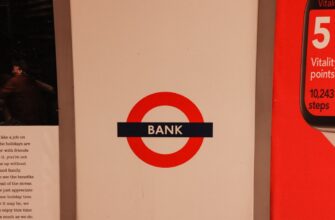- How to Buy Safely with PayPal: Your Ultimate Security Guide
- Why PayPal is Your Security Ally
- 10-Step Checklist for Safe PayPal Purchases
- Understanding PayPal’s Purchase Protection
- Resolving Issues: Your Dispute Roadmap
- Frequently Asked Questions (FAQ)
- Is PayPal safer than using my credit card directly?
- Can sellers see my bank information?
- What should I do if I notice unauthorized PayPal charges?
- Are all PayPal transactions covered by Purchase Protection?
- How can I spot PayPal phishing scams?
- Smart Shopping Starts Here
How to Buy Safely with PayPal: Your Ultimate Security Guide
With over 400 million users worldwide, PayPal remains a top choice for secure online payments. Yet even with its robust security infrastructure, savvy shoppers must take proactive steps to protect themselves. This comprehensive guide reveals actionable strategies to maximize safety when using PayPal, ensuring your money and personal data stay shielded from scams.
Why PayPal is Your Security Ally
PayPal’s multi-layered security framework makes it safer than sharing credit card details directly with merchants. Key protections include:
- Encrypted Transactions: Military-grade encryption shields your financial data
- Purchase Protection: Covers eligible unauthorized transactions and undelivered items
- 24/7 Fraud Monitoring: AI systems detect suspicious activity in real-time
- Seller Verification: Business accounts undergo identity confirmation
10-Step Checklist for Safe PayPal Purchases
- Verify Seller Legitimacy: Check reviews, website security (HTTPS), and contact information before purchasing
- Use Strong Account Security: Enable two-factor authentication and create a unique password
- Link Credit Cards, Not Debit Cards: Credit cards offer additional fraud dispute options
- Always Check the Payment Description: Ensure merchant names match the website you’re buying from
- Use PayPal’s Built-in Checkout: Never pay via direct money transfer to avoid losing protection
- Review Transaction Details: Double-check amounts and currency conversions
- Keep Software Updated: Use current antivirus and browser versions on all devices
- Monitor Account Activity: Set up purchase notifications and review statements monthly
- Avoid Public Wi-Fi for Transactions: Use VPN or cellular data for sensitive purchases
- Document Everything: Save order confirmations, shipping details, and seller communications
Understanding PayPal’s Purchase Protection
PayPal’s flagship security program covers eligible purchases if:
- You don’t receive the item (Seller Protection)
- The item is significantly different from its description (Buyer Protection)
- Unauthorized transactions occur on your account
Key limitations: Claims must be filed within 180 days. Virtual items, vehicles, and custom-made goods often aren’t covered. Always review protection terms before purchasing high-value items.
Resolving Issues: Your Dispute Roadmap
- Contact the seller directly to resolve issues politely
- If unresolved, open a dispute in PayPal’s Resolution Center within 180 days
- Escalate to a claim if no solution emerges within 20 days
- Provide evidence: Screenshots, emails, tracking numbers, and order details
- Await PayPal’s investigation (typically 30 days)
Frequently Asked Questions (FAQ)
Is PayPal safer than using my credit card directly?
Yes. PayPal adds an extra security layer by keeping your financial details private from merchants and using advanced fraud detection systems unavailable to most individual retailers.
Can sellers see my bank information?
No. Sellers only see your name, email, shipping address, and transaction details. Your bank account or card numbers remain encrypted and hidden.
What should I do if I notice unauthorized PayPal charges?
Immediately report it through PayPal’s Resolution Center. Under their $0 Liability policy, you won’t pay for unauthorized transactions if reported promptly.
Are all PayPal transactions covered by Purchase Protection?
No. Protection applies primarily to physical goods purchases. Services, digital items, real estate, and person-to-person payments typically aren’t covered. Always check eligibility before paying.
How can I spot PayPal phishing scams?
Watch for emails with urgent payment demands, suspicious links, misspelled URLs, or requests for login credentials. Legitimate PayPal communications always address you by name and never ask for passwords via email.
Smart Shopping Starts Here
By combining PayPal’s security infrastructure with vigilant shopping habits, you create an almost impenetrable defense against online fraud. Remember: Your safest transactions happen when you verify sellers, use protected payment methods, and trust your instincts. When deals seem too good to be true, they usually are. Stay alert, follow these guidelines, and enjoy PayPal’s convenience with complete confidence.








